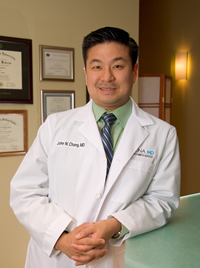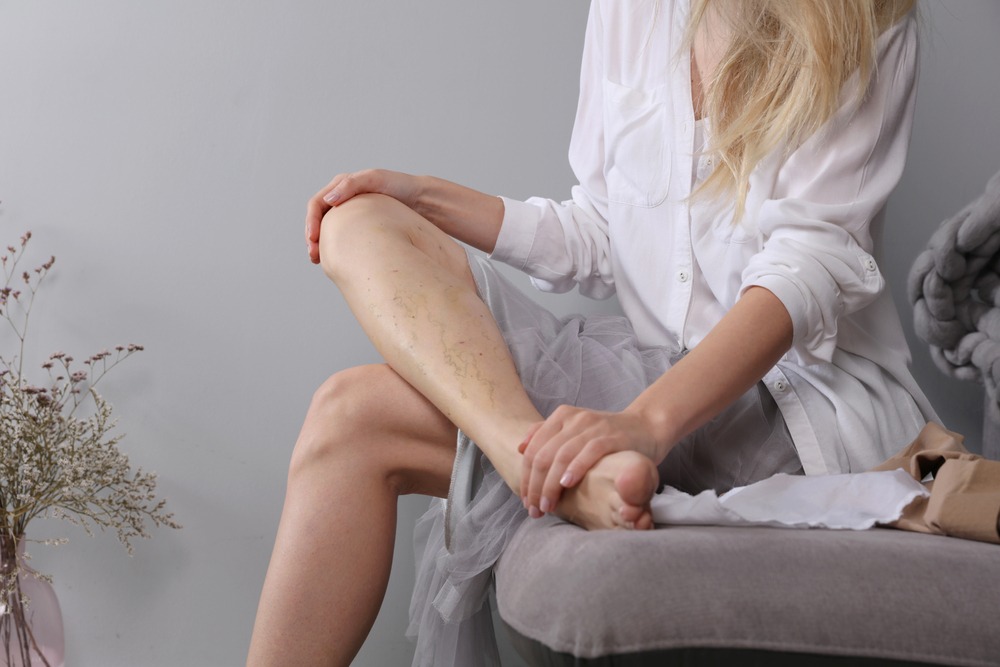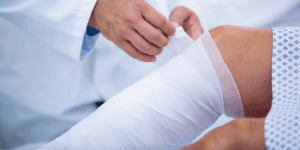| Varicose veins are a common condition that can cause discomfort and self-consciousness, but understanding their causes and treatment options can help you take control of your vein health. From genetics and aging to lifestyle factors, several elements can contribute to varicose veins. Fortunately, there are effective treatments available, including lifestyle changes, compression stockings, sclerotherapy, and laser therapy. At Miami Vein Institute, we’re committed to providing personalized care to help you feel confident and comfortable in your skin again. |
Varicose veins are a common and often misunderstood condition that affects millions of people, causing visible, twisted veins, usually on the legs. While they might be an aesthetic concern for some, for others, varicose veins can also bring discomfort, pain, or even more serious complications. Understanding why varicose veins happen and how you can take control of your health is crucial in managing and preventing this condition.
We want to ensure you have all the information you need to make informed decisions about your vein health. Our compassionate team is dedicated to providing personalized care and offering effective treatment options so that you can live confidently and comfortably, no matter your age or stage of life.
What Are Varicose Veins?
Varicose veins are enlarged, swollen veins that can appear dark purple or blue and often look twisted or bulging. These veins usually occur on the legs and feet, as the veins in these areas have to work against gravity to pump blood back to the heart.
Veins have one-way valves that help keep blood flowing in the right direction. However, when these valves become weakened or damaged, blood starts to pool in the veins, causing them to stretch and swell. Over time, this can lead to the characteristic appearance of varicose veins.
While varicose veins are often seen as a cosmetic issue, they can also cause physical discomfort, including aching, heaviness, and swelling in the affected area. In some cases, they may even lead to more serious complications, such as blood clots or ulcers.
Why Do Varicose Veins Happen?
Several factors can contribute to the development of varicose veins. Understanding these factors can help you recognize the potential causes of your condition and take proactive steps toward better vein health.
- Genetics
One of the most significant factors influencing the development of varicose veins is genetics. If your parents or grandparents had varicose veins, you may be more likely to develop them as well. Inherited traits can affect the strength and functionality of your vein valves, making it easier for veins to become weakened over time. - Age
As we age, the valves in our veins may begin to weaken, and the walls of the veins can become less elastic. This natural wear and tear make it harder for veins to effectively push blood back to the heart, which can lead to the development of varicose veins. Age also increases the likelihood of developing other vein problems, such as deep vein thrombosis (DVT). - Hormonal Changes
Hormonal changes, particularly in women, can play a significant role in the development of varicose veins. Pregnancy, menopause, and hormonal treatments such as birth control pills or hormone replacement therapy can all increase the risk of varicose veins. During pregnancy, for example, the growing uterus puts additional pressure on the veins, while hormonal changes can relax the vein walls, making them more prone to stretching. - Prolonged Standing or Sitting
Occupations or activities that require long periods of standing or sitting can contribute to the development of varicose veins. When you stay in one position for extended periods, your veins have a harder time circulating blood, which can lead to increased pressure in the veins and cause them to swell. - Obesity
Carrying excess weight puts added pressure on your veins, especially in the lower legs. This additional pressure can weaken the veins over time and increase the likelihood of developing varicose veins. Maintaining a healthy weight is one of the most effective ways to reduce the strain on your veins. - Pregnancy
Pregnancy is a common time for women to develop varicose veins. The growing baby puts pressure on the veins, especially in the pelvic area, which can impair blood flow. Hormonal changes also relax vein walls during pregnancy, contributing to the development of varicose veins. While the condition often improves after childbirth, some women may experience persistent varicose veins.
How to Take Control: Treatment Options for Varicose Veins
The good news is that varicose veins are treatable. Whether you’re experiencing discomfort or simply want to reduce their appearance, there are several treatment options available to help you regain control over your vein health.
- Lifestyle Changes
Making certain lifestyle changes can help manage or even prevent varicose veins from worsening. Here are a few tips:- Exercise regularly: Physical activity helps improve circulation and strengthen the muscles that support your veins.
- Maintain a healthy weight: Reducing excess weight can relieve pressure on your veins and help prevent varicose veins from developing or worsening.
- Elevate your legs: Elevating your legs above heart level helps improve blood flow and reduce swelling.
- Avoid prolonged standing or sitting: If your job requires you to be on your feet for long periods, take breaks to sit or walk around. If you’re sitting for long periods, try to elevate your legs or move your feet regularly to keep the blood circulating.
- Compression Stockings
Compression stockings are specially designed to apply gentle pressure to the legs, helping veins circulate blood more effectively. These stockings can help reduce swelling and discomfort and are often recommended for people with mild to moderate varicose veins. They are available in different strengths and sizes, so it’s essential to consult with a healthcare professional to determine the right type for you. - Sclerotherapy
Sclerotherapy is a common and effective treatment for varicose veins. During the procedure, a special solution is injected into the affected veins, causing them to collapse and fade over time. This treatment is minimally invasive and typically requires little downtime, making it a popular option for many patients. - Endovenous Laser Treatment (EVLT)
Endovenous laser treatment is a minimally invasive procedure that uses laser energy to close off the affected veins. The heat from the laser causes the vein to shrink and collapse, redirecting blood flow to healthier veins. EVLT is a popular choice for treating larger varicose veins and offers excellent results with minimal recovery time. - Vein Stripping and Ligation
In more severe cases, vein stripping and ligation may be necessary. This surgical procedure involves removing or tying off the problematic vein to prevent blood from flowing through it. While this is a more invasive option, it is highly effective for patients with large or severely damaged veins.
Can Varicose Veins Be Prevented?
While it may not be possible to entirely prevent varicose veins, there are steps you can take to reduce your risk and minimize their impact:
- Wear compression stockings to support your veins, especially if you have a family history of varicose veins or have to stand for long periods.
- Practice healthy lifestyle habits like maintaining a healthy weight, staying active, and avoiding prolonged sitting or standing.
- Elevate your legs whenever possible to promote better circulation.
Take the First Step Toward Healthier Veins with Miami Vein Institute
If you’re struggling with varicose veins or simply want to learn more about your treatment options, we’re here to help. At Miami Vein Institute, we offer personalized care tailored to your unique needs. Our compassionate team is dedicated to helping you regain confidence and comfort with effective treatment options.
Ready to take control of your vein health? Schedule a consultation with us today and start your journey toward clearer, healthier veins!
Frequently Asked Questions (FAQ)
What causes varicose veins?
Varicose veins are caused by weakened or damaged vein valves that allow blood to flow backward and pool in the veins. This can result from genetics, aging, hormonal changes, prolonged standing, obesity, or pregnancy.
Can varicose veins be treated without surgery?
Yes, several non-surgical treatments are available, including sclerotherapy, laser treatments, and compression stockings, which can significantly reduce the appearance and symptoms of varicose veins.
How long does it take to recover from varicose vein treatment?
Recovery times vary depending on the treatment. Most non-surgical treatments like sclerotherapy or laser therapy have minimal downtime, with most patients able to resume normal activities within a day or two. Surgical options like vein stripping may require a longer recovery period.
Are varicose veins dangerous?
In most cases, varicose veins are not dangerous. However, they can lead to complications such as blood clots, ulcers, or bleeding if left untreated. It’s important to seek treatment if you experience pain, swelling, or other symptoms.

John W. Dr. Chang, MD, serves as the Partner and Medical Director at Miami Vein Institute, a premier center specializing in vein treatment in South Florida. With a focus on providing high-quality care and ensuring patient safety and satisfaction, Dr. Chang has helped establish Miami Vein Institute as a leading destination for minimally invasive vein treatments. At Miami Vein Institute, Dr. Chang offers a comprehensive range of minimally invasive procedures, including Endovenous Laser Treatments (EVLT) and Sclerotherapy, to address various vein-related concerns. His expertise in both general and cosmetic surgery, combined with specialized training in vein treatments, allows him to tailor treatment plans to meet each patient’s individual needs. Dr. Chang’s commitment to excellence is reflected in his meticulous attention to detail and dedication to staying updated with the latest advancements in vein care technologies. He is certified in a wide array of cosmetic surgery procedures and is a certified trainer for various advanced techniques. Dr. Chang’s affiliations with prestigious medical associations underscore his commitment to upholding the highest standards of medical excellence. With a focus on patient well-being and personalized care, Dr. Chang ensures that every patient receives honest, expert guidance throughout their treatment journey. His passion for providing the best possible care is evident in his commitment to patient satisfaction and achieving optimal outcomes.


